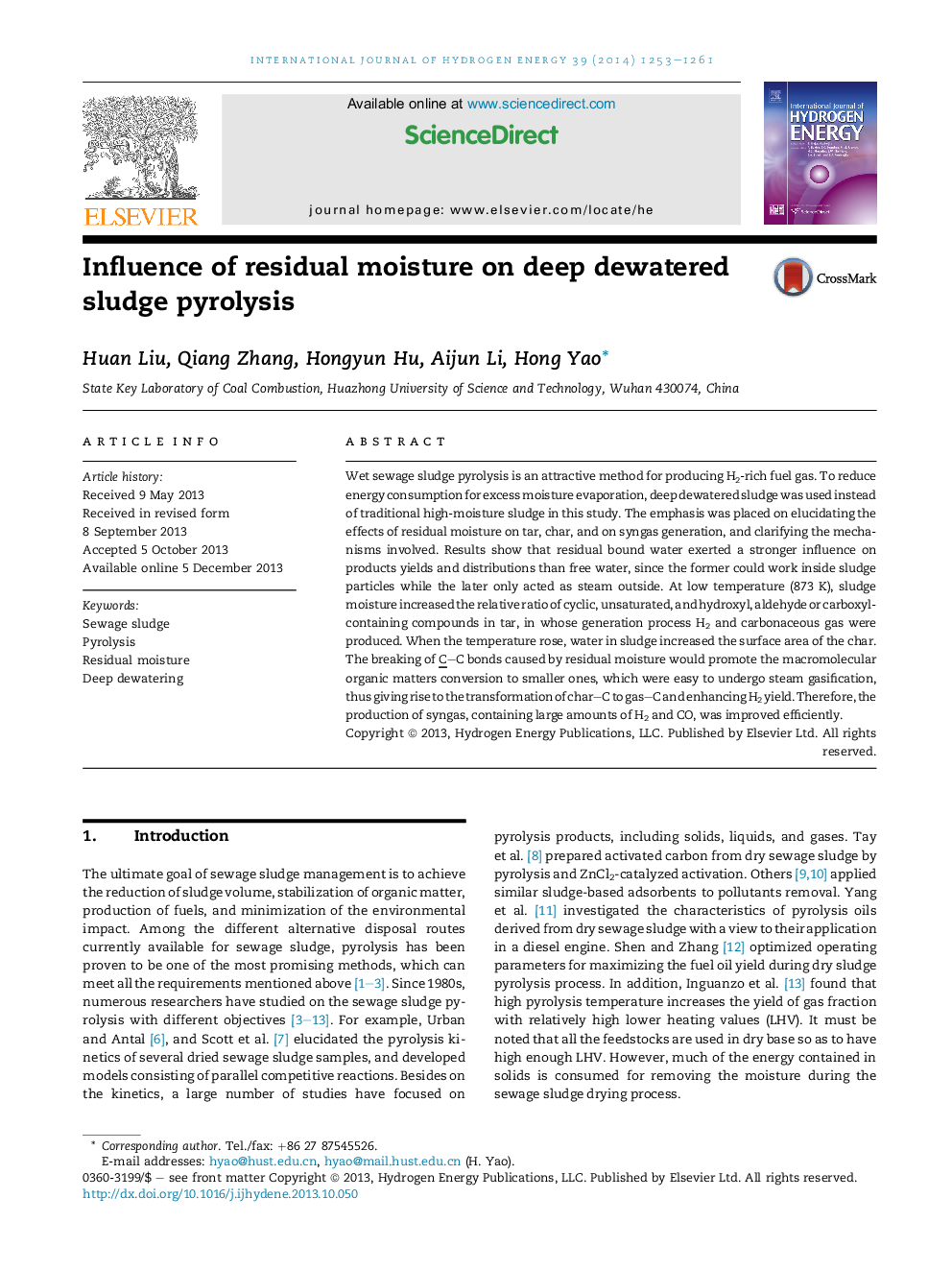| Article ID | Journal | Published Year | Pages | File Type |
|---|---|---|---|---|
| 7720806 | International Journal of Hydrogen Energy | 2014 | 9 Pages |
Abstract
Wet sewage sludge pyrolysis is an attractive method for producing H2-rich fuel gas. To reduce energy consumption for excess moisture evaporation, deep dewatered sludge was used instead of traditional high-moisture sludge in this study. The emphasis was placed on elucidating the effects of residual moisture on tar, char, and on syngas generation, and clarifying the mechanisms involved. Results show that residual bound water exerted a stronger influence on products yields and distributions than free water, since the former could work inside sludge particles while the later only acted as steam outside. At low temperature (873Â K), sludge moisture increased the relative ratio of cyclic, unsaturated, and hydroxyl, aldehyde or carboxyl-containing compounds in tar, in whose generation process H2 and carbonaceous gas were produced. When the temperature rose, water in sludge increased the surface area of the char. The breaking of C-C bonds caused by residual moisture would promote the macromolecular organic matters conversion to smaller ones, which were easy to undergo steam gasification, thus giving rise to the transformation of char-C to gas-C and enhancing H2 yield. Therefore, the production of syngas, containing large amounts of H2 and CO, was improved efficiently.
Related Topics
Physical Sciences and Engineering
Chemistry
Electrochemistry
Authors
Huan Liu, Qiang Zhang, Hongyun Hu, Aijun Li, Hong Yao,
